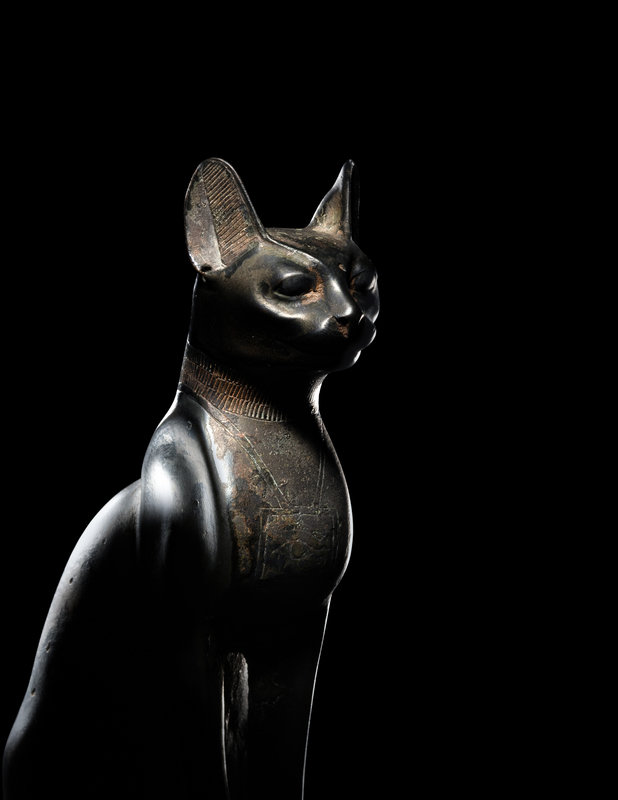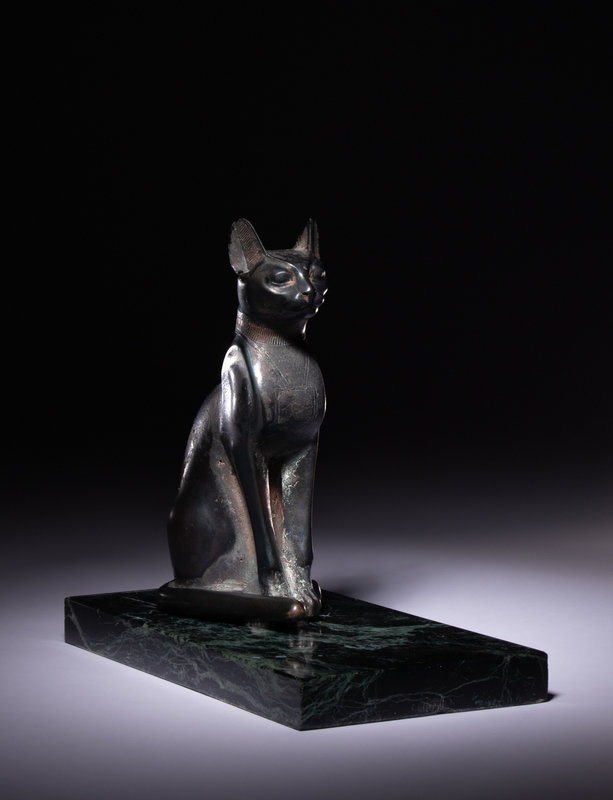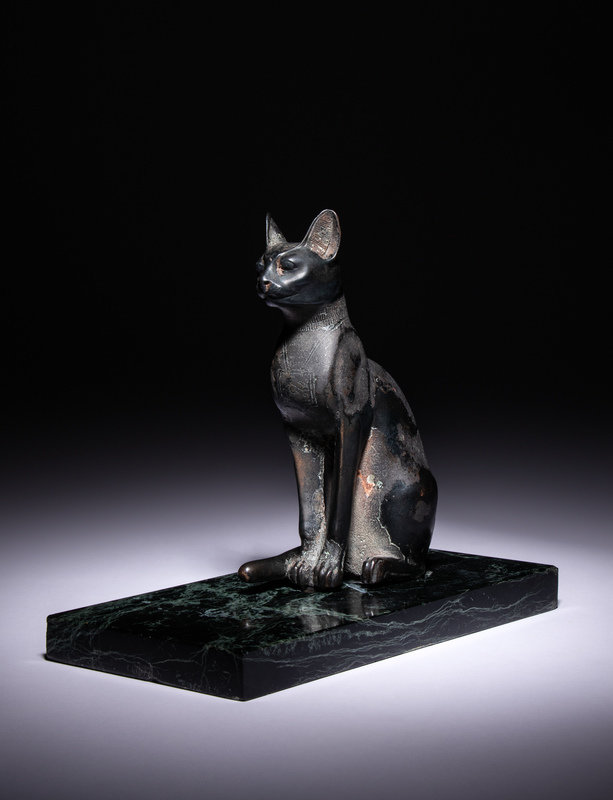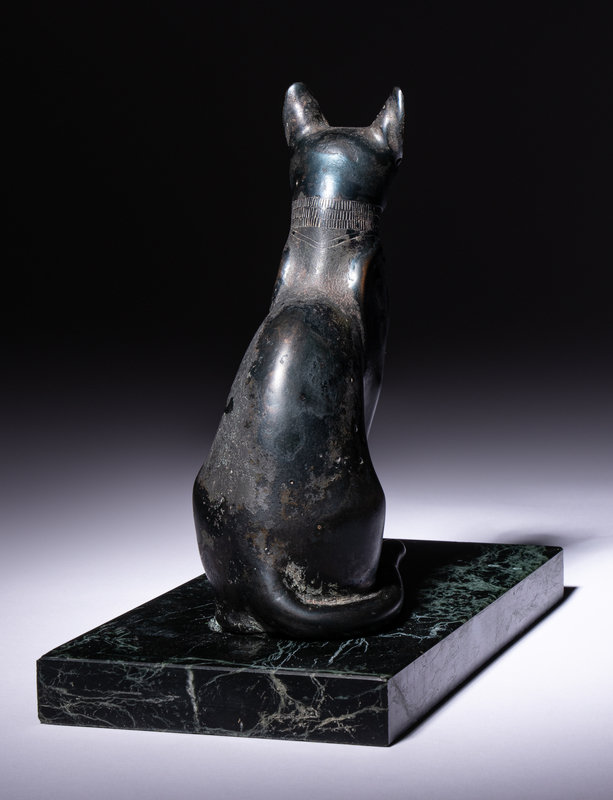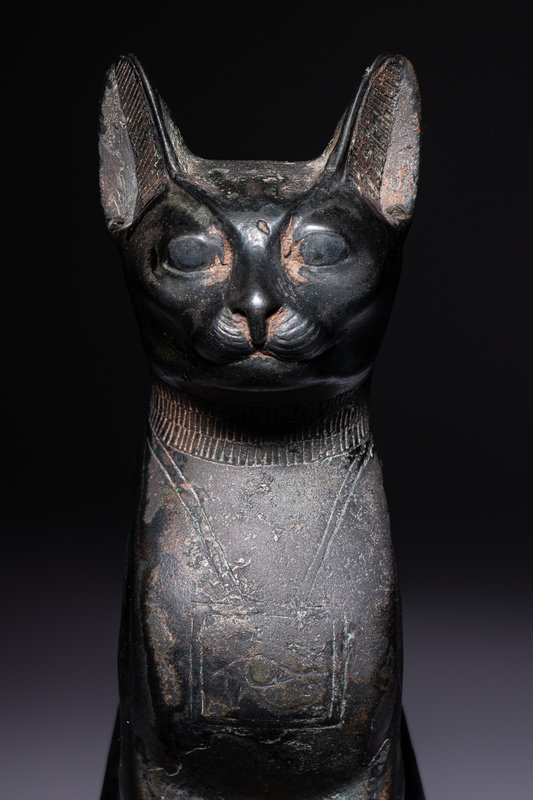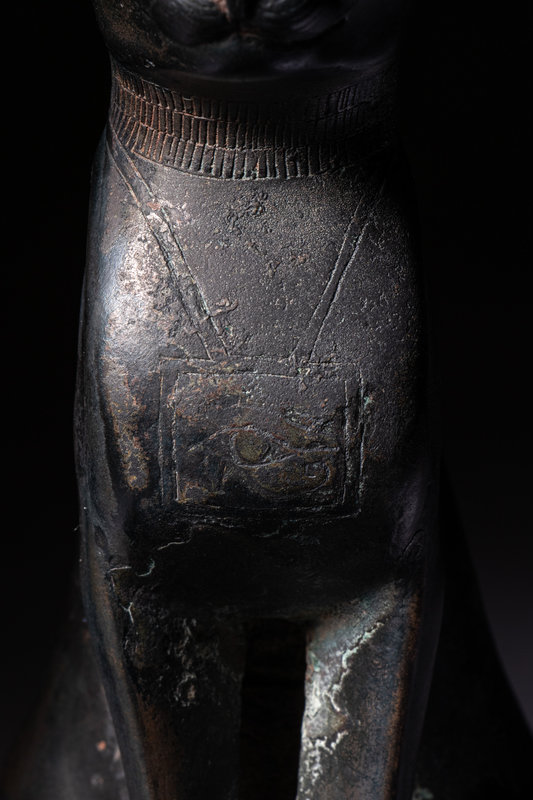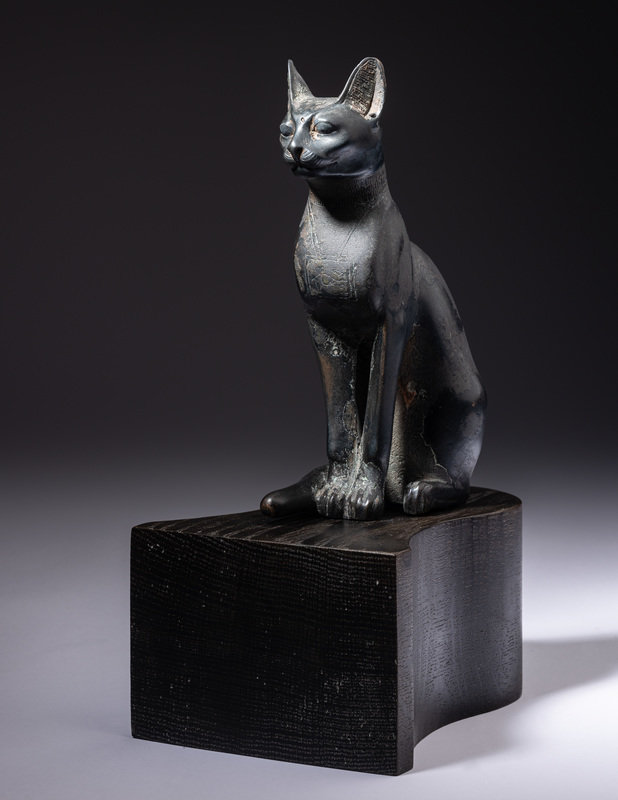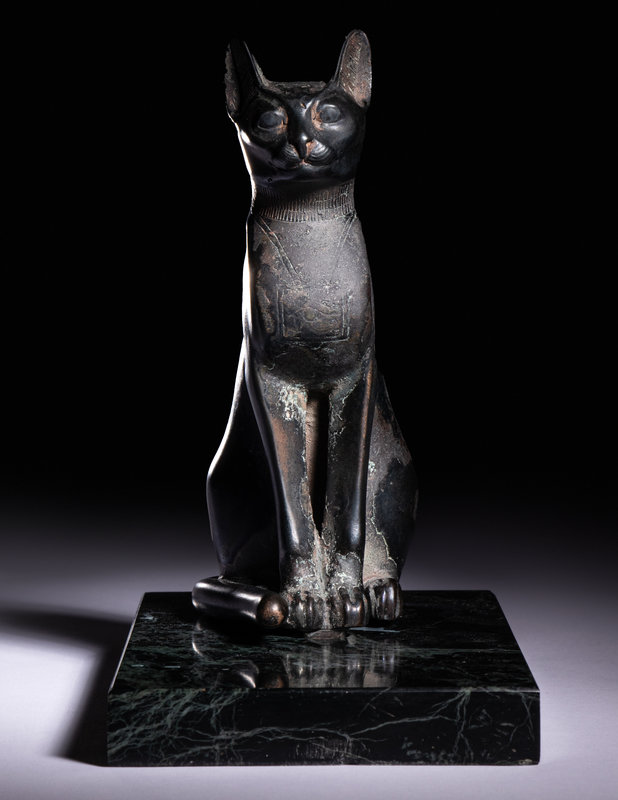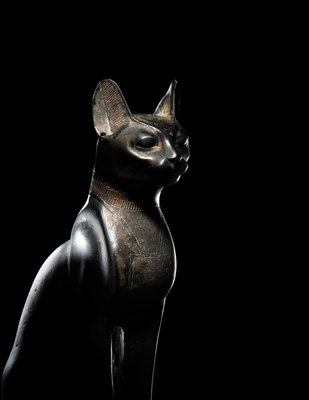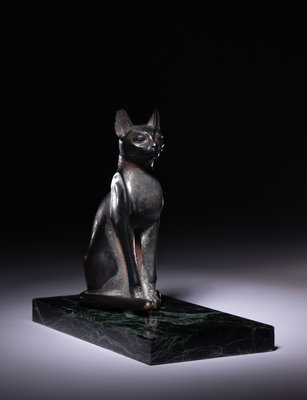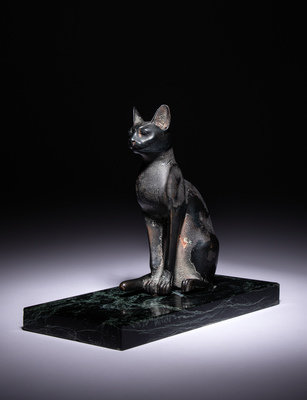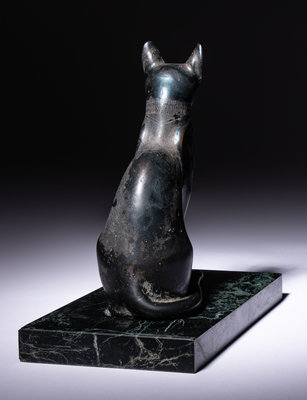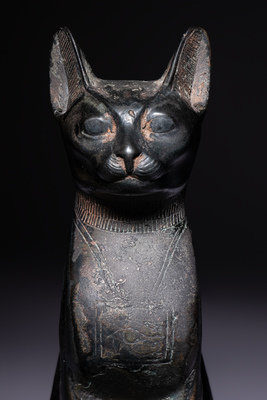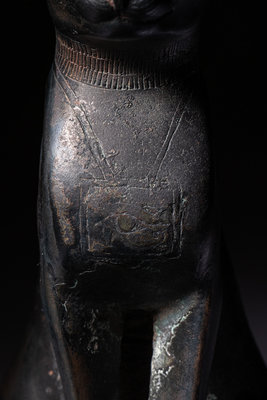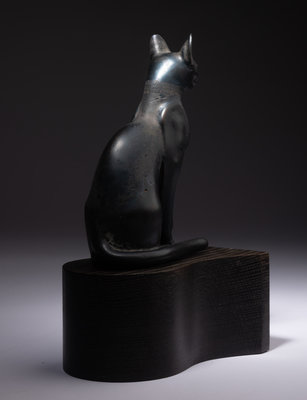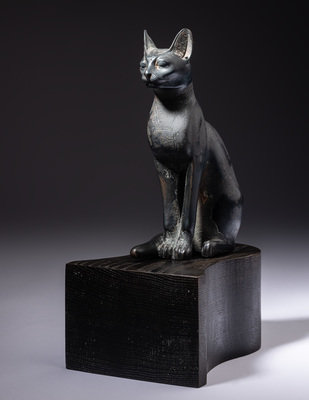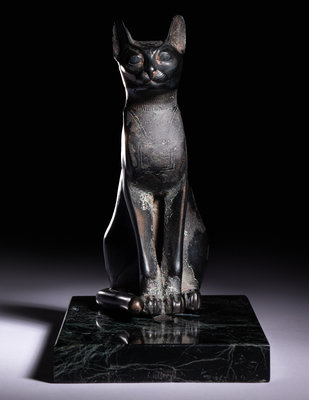Condition Report
Contact Information
Auction Specialist
Lot 29
An Egyptian Bronze Cat
Sale 1035 - Antiquities and Ancient Art: A Study
May 26, 2022
10:00AM CT
Live / Chicago
Own a similar item?
Estimate
$50,000 -
70,000
Price Realized
$125,000
Sold prices are inclusive of Buyer’s Premium
Lot Description
An Egyptian Bronze Cat
Late Period to Ptolemaic Period, 664-30 B.C.
Height 7 1/2 inches (19 cm).
Property from the Collection of Dr. Hernan D. Ruf, Pompano Beach, Florida
Provenance:
H. Ismail el Shaer, Cairo, Egypt.
Joseph Rucinski (1907-2005), Washington, D.C.
and Key Biscayne, acquired from the above, 1961;
thence by descent.
Matheson's Gallery, Melbourne, Florida, Very Important Estates Auction, 28-29 July 2007.
Amero Auctions, Sarasota, Florida, Fine Arts, Antiques, and Jewelry Auction, 29 July 2018, Lot 15.
Christie's, New York, Antiquities, 12 April 2021, Lot 14.
Note:
Cast in bronze, this impressive and dignified looking cat is depicted in a conventional seated position. The detailing includes an incised wedjat pendant suspended from the nape, three-banded collar around the neck, and curled tail around the body and forepaws. In ancient Egypt, the cat personified Bastet, the goddess of fertility, pleasure, and good health. Those hoping to conceive or seeking protection against disease would make offerings to her. Mummified cats, as well as statues made of wood or bronze, like this present example, were dedicated to her and buried at her temples, functioning as votives for the deity.
As can be seen from it's original purchase receipt dated 4 February 1961, and the 'Letter of Appreciation', Dr. Rucinski spent many years in East Asia and the Middle East working to help reduce global poverty through the International Bank of Reconstruction and Development (IBRD). From archival photographs of his collection, the cat was once displayed atop a verde antico base (still with the object), but has since been replaced with a modern one made from a 3000 year old bog oak carved in the form of a menat, the scared Egyptian symbol of the goddess Hathor.
For a comparable example of this bronze cat, see J. Malek, The Cat in Ancient Egypt, Philadelphia, 1993, p. 101, fig. 64; and, The Metropolitan Museum of Art (Inv. no. 56.16.1).
